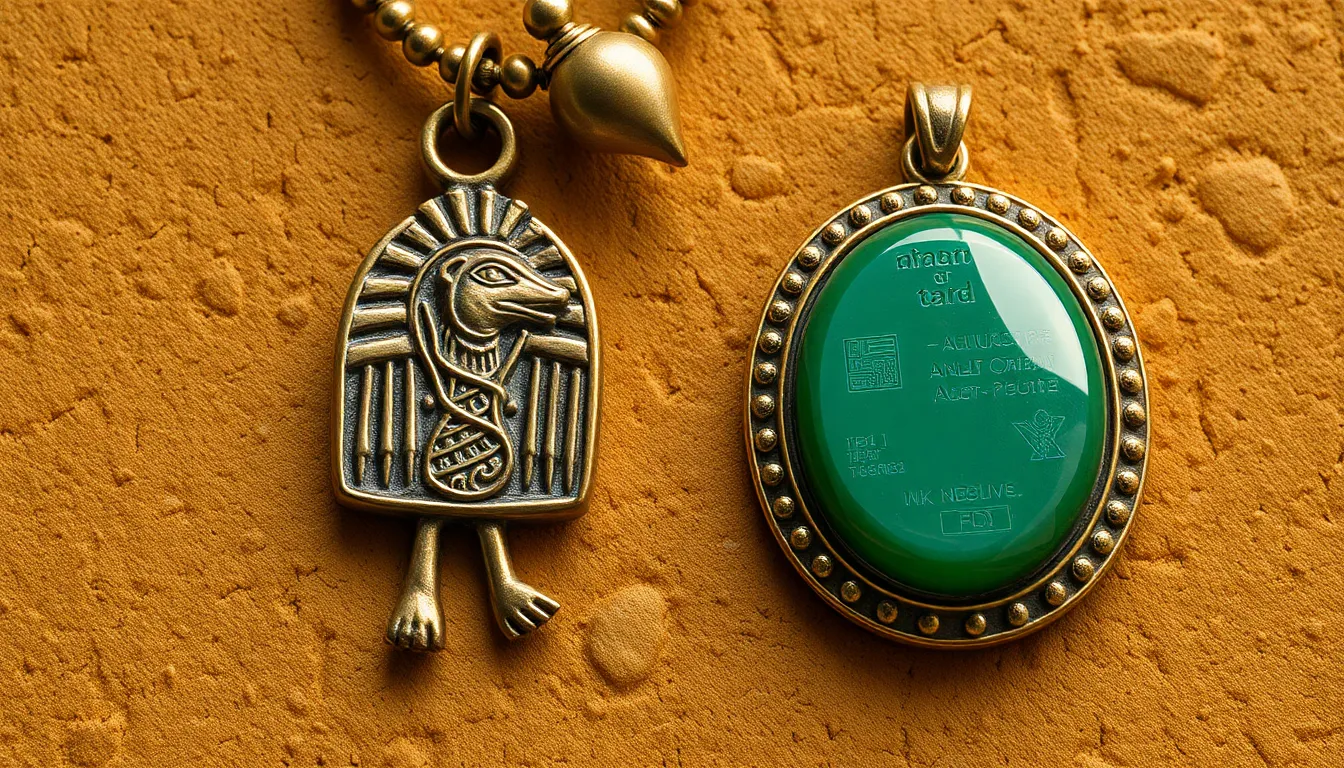The Role of Amulets in Protecting Against Evil
I. Introduction
Amulets have been an intrinsic part of human culture for millennia, serving as objects believed to possess protective qualities. Typically worn or carried, amulets are thought to shield individuals from evil forces, misfortune, and harm. These charms are deeply rooted in various traditions and beliefs, reflecting the rich tapestry of human history and spirituality.
The cultural significance of amulets transcends geographical boundaries, appearing in ancient civilizations and modern contexts alike. From Egyptians to contemporary practitioners of spirituality, the allure of amulets continues to captivate the human imagination.
II. Historical Perspectives on Amulets
Throughout history, different civilizations have crafted and used amulets for protection and other purposes. The ancient Egyptians are perhaps the most famous users of amulets, embedding them in tombs and adorning mummies with various charms, each with specific protective qualities.
- Egyptians: Used amulets like the Ankh (symbol of life) and the Scarab (symbol of rebirth) to ensure safe passage to the afterlife.
- Greeks: Employed amulets made of gemstones, often inscribed with prayers or symbols, to ward off evil spirits.
- Romans: Used phallic symbols and other charms, believing they provided fertility and protection against malevolent forces.
Over time, the design and materials of amulets evolved, incorporating precious metals, stones, and intricate craftsmanship, reflecting the socio-economic conditions and artistic styles of their respective eras.
III. Cultural Variations in Amulet Usage
Amulets are not confined to a single culture or religion; they appear in a multitude of religions and regional practices, each with its unique interpretation and significance.
- Christianity: Items like the crucifix or saints’ medals are worn for protection and blessings.
- Islam: The use of the Ayat al-Kursi, a verse from the Quran, inscribed on amulets for protection against evil.
- Hinduism: Navaratna (nine gems) are believed to grant protection and positive energy.
Regional practices also vary significantly. In Africa, for instance, different tribes create unique amulets using local materials, while in Asia, the use of talismans is common among various indigenous cultures, often linked to ancestral spirits and nature.
IV. Symbolism and Beliefs Associated with Amulets
Amulets are rich in symbolism, with various symbols attributed specific meanings. Common symbols include:
- Eye of Horus: Represents protection, health, and restoration.
- Pentacle: Used in various spiritual practices, symbolizing the protection of the earth and its elements.
- Four-leaf clover: A symbol of good luck and protection against evil.
The belief in the protective power of amulets has a profound psychological impact. Many individuals find comfort and a sense of security in these objects, which can help alleviate anxiety about the unknown and the unpredictable nature of life.
V. Types of Amulets and Their Functions
Amulets can be broadly categorized into protective amulets and talismans:
- Protective Amulets: Specifically designed to guard against evil or misfortune. Examples include the evil eye amulet, which is believed to protect against malevolent glares, and the Hamsa hand, often used in Middle Eastern cultures.
- Talismans: Objects believed to bring good luck or fortune. Common examples include lucky charms like rabbit’s feet or horseshoes.
Personal items, such as lockets containing photos of loved ones, can also serve as amulets, providing emotional protection and comfort.
VI. Modern Interpretations and Uses of Amulets
In contemporary society, there has been a resurgence of interest in amulets, often associated with personal spirituality and wellness movements. Many people are drawn to the idea of carrying or wearing amulets that resonate with their personal beliefs and values.
- Spiritual Practices: Amulets are often integrated into meditation and mindfulness practices, serving as focal points that enhance spiritual connection.
- Fashion and Expression: Modern jewelry often incorporates traditional amulet designs, allowing wearers to express their beliefs while also making a fashion statement.
This revival highlights the adaptability of amulets, as they continue to evolve and find relevance in a rapidly changing world.
VII. Scientific Perspectives and Skepticism
While many hold strong beliefs in the protective powers of amulets, scientific perspectives often approach these beliefs with skepticism. Psychological explanations suggest that the efficacy of amulets may stem from:
- Placebo Effect: The belief in the power of an amulet can lead to increased confidence and reduced anxiety, which may result in perceived protection.
- Cognitive Bias: Individuals may notice positive outcomes associated with their amulets while disregarding negative events, reinforcing their beliefs.
Critical views emphasize that belief in supernatural protection can lead to reliance on amulets rather than addressing real-world issues, urging a balance between belief and pragmatic approaches to life’s challenges.
VIII. Conclusion
Amulets have played an enduring role in human culture, serving as symbols of protection, luck, and spiritual significance across various societies. Their evolution from ancient artifacts to modern expressions of personal belief highlights the complex nature of human spirituality.
As we navigate a world filled with uncertainty, the balance between belief and skepticism continues to shape our understanding of amulets. Whether regarded as mere objects or powerful symbols, amulets reflect humanity’s ongoing quest for protection and understanding in the face of the unknown.




